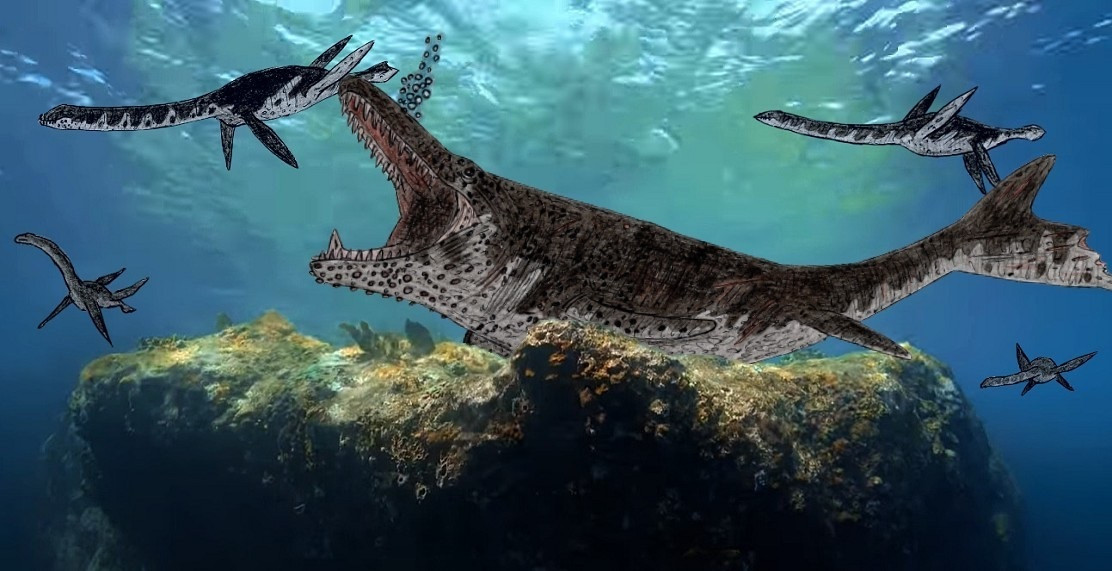HOME | DD
 ThalassoAtrox — Colossal Cleanup
ThalassoAtrox — Colossal Cleanup

#mosasaur #zarafasaura #coralreef #netherlands #plesiosaur #sea_monster #seamonster #mosasaurus #oceanlandscape #cretaceousperiod #mosasauridae #prehistoricplanet #prehistoric_planet #mosasaurushoffmani #mosasaurushofmannii
Published: 2022-06-09 23:50:59 +0000 UTC; Views: 26864; Favourites: 238; Downloads: 6
Redirect to original
Description
When watching Prehistoric Planet’s first episode, “Coasts”, I was very pleasantly surprised by the various ways they subverted expectations and showcased speculative behavior that made sense for the respective animals. Case in point, Mosasaurus hoffmanni is not savagely killing another denizen of the deep but rather, we see the 60-foot giant relaxing on a coral reef and letting various tiny fish and shrimps clean its shedding scales…before fighting another Mosasaurus for the spot.
Mosasaurus hoffmanni is the type genus of its kin, the mosasaurs (giant marine relatives of monitor lizards and snakes), and one of the largest if not the largest of its kind. It swam the oceans 70-66 mya, around the same time T. rex was stalking Laramidia and was wiped out by the same cataclysmic extinction event. It would have been the top predator in the ancient Tethys Sea, with fossils being found throughout Europe, with the holotype stemming from the Maastricht Formation of the Netherlands, and possibly Nort America as well. Unlike similar giant mosasaurs such as the North American Tylosaurus, Mosasaurus is known from incomplete remains (mainly skulls), leading to debates about its full size, with conservative estimates putting it at an impressive 40-45 feet, but higher estimates suggest it reached 50 or even 60 feet in length, as long as a bull sperm whale (though obviously not as heavy).
Even at the smaller size, Hoffmann’s mosasaur would have been one of the apex predator of its domain, preying on pretty much anything else that shared its habitat, including long-necked elasmosaurids like Zarafasaura, giant protostegid turtles like Ocepechelon, the ichthyodectid Xiphactinus, sharks like Squalicorax and polycotylids, but it would have also coexisted with other large mosasaurs like the slimmer Mosasaurus lemonnieri (33-36 feet), the tylosaurine Hainosaurus bernardi (40 feet) and species of Prognathodon (30-40 feet), so you better believe that the Maastrichtian Tethys Sea was filled to the brim with massive sea monsters.
Related content
Comments: 8

👍: 0 ⏩: 0

👍: 3 ⏩: 0

👍: 0 ⏩: 0

👍: 0 ⏩: 0

👍: 0 ⏩: 0

👍: 2 ⏩: 1

👍: 2 ⏩: 0

👍: 2 ⏩: 0

























